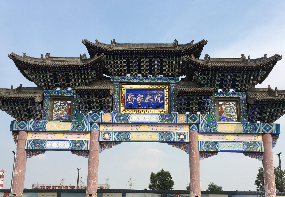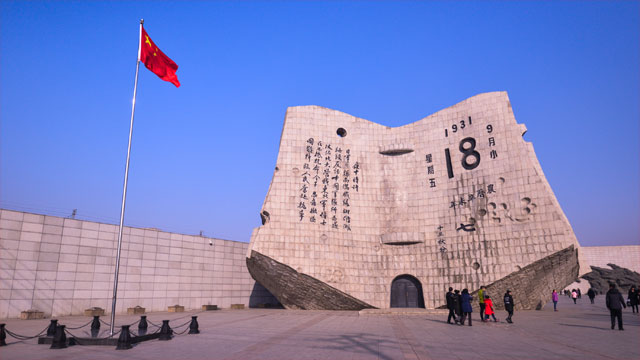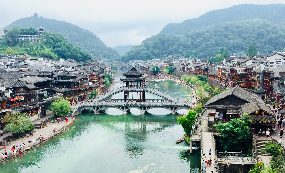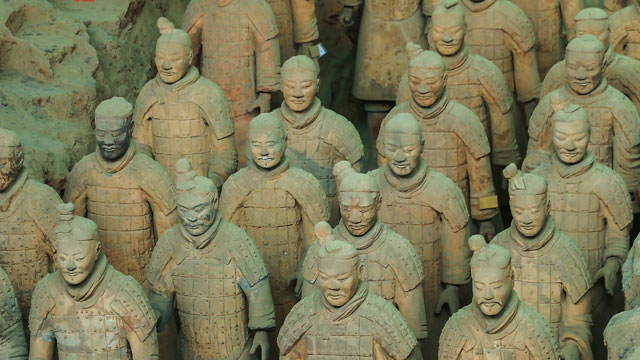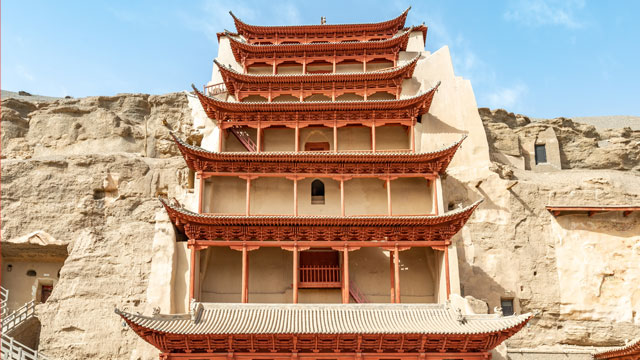SiChuan
Sichuan, referred to as Sichuan or Shu, is one of 23 provinces in China and the capital of Chengdu. It is located in the interior of Southwest China, bounded between 26 ° 03 ′ and 34 ° 19 'n, 97 ° 21 ′ to 108 ° 12' e, Chongqing in the East, Yunnan and Guizhou to the south, Tibet to the west, Shaanxi, Gansu and Qinghai to the north.
The landform of Sichuan is different from the landform of the Chinese mainland. It is located in the transition zone between the first grade Qinghai Tibet Plateau and the second grade middle and lower reaches of the Yangtze River in the three great steps of the mainland of China. The height difference is very high. The terrain is characterized by the High West and the East, and is composed of hills, hills, plain basins and high plains. Sichuan Province is divided into three major climates, namely, the humid climate of the middle subtropical zone in Sichuan Basin, the subtropical semi humid climate in the southwest mountainous region of Sichuan Province, the high cold climate of the mountain plateau in Northwest Sichuan, and the overall climate is pleasant. It has many long-lived villages, such as Dujiangyan City, Pengshan District, Changning County, etc., all of whom have more than 1000 people.
Sichuan Province covers a total area of 486000 square kilometers, which has jurisdiction over 18 prefecture level cities and 3 autonomous prefectures. There are 54 municipal districts, 18 county-level cities, 107 counties and 4 autonomous counties, with 183 County divisions in total. There are 353 streets, 2232 towns, 1929 townships and 98 ethnic townships, with a total of 4612 township level divisions.
At the end of 2018, Sichuan Province had a permanent population of 83.41 million, with a GDP of 4067.813 billion yuan. In October 2019, it will be selected into the national digital economy innovation and development pilot zone.
Historical evolution
Original name
In the fourth year of Xianping in the Northern Song Dynasty (1001), Sichuan Xialu, located in the Sichuan Basin, was divided into Yizhou Road, Zizhou Road, Lizhou road and Kuizhou Road, which were collectively referred to as "Sichuan Xia Fourth Road" or "Sichuan Road". In the meantime, Sichuan pacification system was set up to set up the official posts, such as Sichuan Xuanfu envoy, which was later referred to as "Sichuan", which was named Sichuan.
Evolution of organizational system
Sichuan began to develop human civilization 25000 years ago, and formed a highly developed ancient Shu civilization in the late Neolithic period, which represented by Baodun culture, Sanxingdui site and Jinsha site. Ancient Shu civilization, Chinese civilization and Liangzhu civilization are also called the three civilizations of the ancient China.
In summer, it was Baipu, and the records of Huayang state contained that "will Yuexian county (now Huili County in Sichuan Province) be the residence of PU, and there are Pu people's graves". In the Shang and Zhou dynasties, Sichuan established Shu state centered by ancient Shu nationality; therefore, Sichuan area was called Shu in ancient times.
In the Xia and Shang Dynasties, the Shu tribe migrated down the Minjiang River from Maoxian to Chengdu Plain.
After the "three generations of Shu king", it was about the same as the early Western Zhou Dynasty (1045 BC), the Duyu Dynasty of ancient Shu was established, and was settled in Yufu (Wenjiang District of Chengdu today), and then moved to Pixi (Pidu District of Chengdu). The Duyu Dynasty adopted the hereditary monarchy system, and its influence basically covered the whole Sichuan Basin.
In the early spring and Autumn period (666 years ago), Duyu Zen was located in the soft turtle Ling in Shu phase. The turtle Ling established the Kaiming Dynasty, and was settled in Guangdu (now Huayang, Chengdu). During the reign of Dushan in Kaiming Dynasty, it was moved to Chengdu (367 years ago).
During the Warring States period (the first 316 years), Qin merged Shu and Ba States, and now set up Shu county (governing Chengdu) in the west of Sichuan and Bashan in East Sichuan (Jiangzhou, that is, Jiangbei District of Chongqing). In the fifty ninth year of King Nan of Zhou Dynasty (256 BC), Li Bing, the head of the state of Shu, took advantage of the previous experience in water control and presided over the construction of a famous Dujiangyan water conservancy project.
In the five years of the first six years of the first six years of the first five years of the first Han Dynasty, Emperor Wu of Han Dynasty established 13 State Department of assassination history and Yizhou provincial history department in the whole country. The jurisdiction of Yizhou was roughly equivalent to the whole Sichuan Basin and Hanzhong area, forming the rudiment of Sichuan. In Han Dynasty, Sichuan was first known as "land of abundance".
In the five years (24 years) of the new emperor Mang, Gongsun said that he occupied Yizhou and became emperor in Chengdu. He took the meaning of Chengdu and became a family.
In the 12th year of the Eastern Han Dynasty (36 years), Yizhou was under the jurisdiction of the Han government. After the uprising of yellow scarf, Liuyan, the animal husbandry in Yizhou, and Liu Zhang, were separated from Sichuan and then destroyed by Liu Bei.
In the first year of Yankang in the Eastern Han Dynasty (220), Cao Pi usurped the Han Dynasty. The following year (221), Liu Bei became emperor in Chengdu, and continued the Han Dynasty, with the national name of Han Dynasty, and the history of Shu Han. In the heyday of Shu and Han Dynasties, Jingzhou and Yizhou were occupied. However, after Guan Yu lost Jingzhou and Liu Bei defeated Yiling, he was greatly injured. After that, he managed the country by Zhugeliang to restore production, which made it possible to fight against Wei and Wu.
In the fourth year of weijingyuan (263), the Han Dynasty in Shu was defeated and divided into Yiliang Prefecture and lianger Prefecture, respectively, eight counties.
In the late Western Jin Dynasty, Li te led the exiles to gain benefits and liangerzhou. In the third year of Yongxing (306), Li Xiong, the son of Li te, was named emperor in Chengdu and was named "Dacheng". In the four years of Xiankang (338), Li Shou, nephew of Li Xiong, changed his national name to Han, and was called "Chenghan". The Han Dynasty was the first country in the sixteen countries, and its territory covered Sichuan Basin and some surrounding areas during its full prosperity. In the third year of Yonghe (347), Dacheng was destroyed by the Eastern Jin Dynasty.
From the north to the south to the Sui Dynasty, it was under the rule of Liu Song, Nanqi, Nanliang, Western Wei, Northern Zhou and Sui dynasties.
After the establishment of Tang Dynasty in the first year of Wude (618), Sichuan was located in Jiannan Road, Shannan East and West Road. Yizhou was changed to Jiannan Road, Liangzhou was Shannan West Road, and nearly 300 counties were built. In the Western Sichuan Plateau, many Jiju Prefecture and county have been set up to strengthen the management of minority areas. Today, Liangshan Yi Autonomous Prefecture is under the regime of Nanzhao.
In Sui and Tang Dynasties, Sichuan was stable in society and economy entered a full period, which was said to "promote one benefit and two". In the chaos of Anshi, Xuanzong of Tang Dynasty took refuge in Shu. Fortunately, Qingyang palace was promoted to Chengdu Prefecture. Then there were two emperors of Tang Dynasty who took refuge in Shu, namely, the Tang Dezong evaded the chaos of Zhu arsenic (Dezong fled to Liangzhou, the Western way in the south of the mountain, and was then Shu), and the Tang Dynasty shied away from the Yellow nest uprising.
During the Five Dynasties, Wang Jian and mengzhixiang successively established the former and post Shu regimes in Sichuan, which lasted 18 years and 31 years respectively.
The three years of Qiande (965) were under the rule of the Song Dynasty. In the fourth year of Xianping in the Northern Song Dynasty (1001), Sichuan is divided into four roads: Yizhou (now Chengdu), Zizhou (today's Santai), Lizhou (now Guangyuan), Kuizhou (Fengjie, Chongqing today), which is collectively called "Sichuan Xia Fourth Road" or "Sichuan Road". In the meantime, Sichuan was established as a envoy, and Sichuan was named accordingly.
In the late Southern Song Dynasty, song and Mongolia fought for half a century (1227-1279) around Sichuan. Due to the tenacious resistance of the military and the people in Sichuan, the population was reduced and the economy was depressed.
From the Yuan Dynasty to the 23rd year of the Yuan Dynasty (1286), Sichuan Xiasi road was merged, and "Sichuan Province" was set up, which was referred to as "Sichuan Province", and the name of "Sichuan Province" was born since then. It was the beginning of the construction of the province for "Sichuan", and the provincial yamen was stationed in Chengdu Fu Lu. Sichuan Province includes the Middle East of Sichuan, Chongqing, southern Gansu and southern Shaanxi. Meanwhile, the distribution pattern of the counties has been basically formed. At that time, the northern Sichuan Plateau and Hanzhong Basin were changed to "Shaanxi Province and other places in the Bank of China". Today, Liangshan Yi Autonomous Prefecture is a "Yunnan Province and other branches of the Bank of China".
In Ming Dynasty, in the fourth year of Hongwu (1371), Zhu Yuanzhang destroyed the great Xia state. Sichuan is one of the 13 government envoys in China. Besides Sichuan and Chongqing, Sichuan Province includes Zunyi City, Northeast Yunnan Province and Northwest Guizhou Province. It has reached the plateau and Liangshan area of Western Sichuan Province. The government of the political secretary is stationed in Chengdu government. And set up a health station in the Western Sichuan Plateau area to carry out military garrison.
In the late Ming Dynasty, Zhang Xianzhong established the "Daxi" regime, which ruled most of Sichuan Basin. At the end of Ming and early Qing Dynasty, Sichuan experienced years of war and chaos, with a sharp decrease in population and devastation. "Sichuan Tongzhi" reads: "since the Han and Tang Dynasties, Sichuan has had a lot of teeth, smoke and fire, and after the war in the late Ming Dynasty, Dingkou is rare as the morning star."
In the early Qing Dynasty, 18 provinces were divided into the mainland of China, and Sichuan Province was the first. The provincial boundaries of Sichuan, Yunnan and Guizhou were greatly adjusted. Zunyi was changed to Guizhou and Eastern Sichuan was transformed into Yunnan. The southern province of Sichuan was basically determined. And through the lake wide filling Sichuan movement to restore productivity. In the middle of Qing Dynasty, five roads were added on the government, state, hall and county, namely: chengmian longmao Road, Jianchang Shangnan Road, Yongning road in South Sichuan, North Sichuan Road and East Sichuan Road, which governed the prefecture, state, hall and county in the region. From the beginning of Qing Dynasty to the end of Qing Dynasty, the local minorities inhabited in Western Sichuan Plateau were "changed to return to the flow".
In 1911, the campaign of road protection broke out in Sichuan, which opened the prelude of the 1911 Revolution, and then established the "Sichuan army government of the Han Dynasty" in Chengdu, declaring that it was separated from the Qing Dynasty.
In the first year of the Republic of China (1912), the Sichuan military government was reorganized into the governor of Sichuan Province of the Republic of China, and the first level construction of the road was revoked, and the provincial government, state, department and county was changed to the provincial government, state, department and county, with the capital located in Chengdu government. In 1913, Yuan Shikai implemented the "separation of military and civilian administration", abolished the establishment of the government, state and hall, and re established the road, and directly placed the county in the road. Sichuan Province is divided into seven roads, namely West Sichuan, Shangchuan south, Xiachuan south, North Sichuan, East Sichuan and Bian Dong and Bian Xi. The five later basin are named Xichuan, Jianchang, Yongning, Jialing and Dongchuan.
In the third year of the Republic of China (1914), the two roads were cut off, namely, the eastern and the west sides. 30 counties west of Kangding County were designated as special areas along the Sichuan border (including Changdu area west of Jinsha River), which was controlled by Sichuan Province. In the seventh year of the Republic of China (1918), Sichuan implemented the system of zone prevention because of the warlords' mixed war.
In September, the 17th year of the Republic of China (1928), Chengdu Municipal Office was transformed into the Chengdu municipal government and the capital of Sichuan Province. In the same year, the Taoism system was abolished.
During the second revolutionary war, the first, second and fourth front army of the Red Army of industry and agriculture of China entered Sichuan successively. (the red four-sided army, centered in Tongjiang County, Sichuan Province, established the Sichuan Shaanxi revolutionary base from December 1932 to April 1935, covering an area of over 42000 square kilometers and a population of 7 million, which was the second largest revolutionary base in the country at that time.)
In February, the new Sichuan provincial government, which took Liu Xiang as the president of the province, was established in February of the twenty-four years of the Republic of China (1935), and the fire control system was withdrawn and the Sichuan government was unified. It is divided into 18 administrative supervision areas and Xicang administrative supervision areas (original Sichuan special area). In early March, Chiang took the opportunity to visit Sichuan, which was the first time in his life to step on the land of Sichuan. Jiang Jieshi vigorously reorganized the military, financial and transportation facilities in Sichuan, effectively strengthening the influence of the national government in Sichuan.
In September, in 26 years of the Republic of China (1937), Sichuan Army soldiers held a general meeting of the oath of war of resistance against Japanese in Shaocheng Park (today's people's Park) in Chengdu. During the Anti Japanese War, about 3.5 million Sichuan people went out to fight against Japan and kept their families and defend the country, leaving a good saying that "the Sichuan people never took the country".
In the twenty eighth year of the Republic of China (1939), the former administrative supervision area of Xikang and the 17th and 18th administrative supervision regions affiliated to Sichuan Province were merged, and Xikang province was established to implement the division of Sichuan and health.
In the 28th year of the Republic of China (1939), the national government of Chongqing moved to Chongqing issued an order, which promoted Chongqing from the second-class and second-class Sichuan provincial government to the first-class central court City, and separated Sichuan Province.
In December 1949, the PLA entered Chengdu. In January 1950, Sichuan Province was cancelled and now Sichuan was divided into four districts of Sichuan Province, namely, West Sichuan, East Sichuan, North Sichuan and South Sichuan and Xikang province. Four districts and Xicang provinces have 21 special districts, 6 cities and 191 counties.
In September 1952, the provincial government of Sichuan Province was established in Chengdu, and the administrative districts of East, West, South and North Sichuan were revoked, and the Sichuan provincial system was restored.
In September 1954, Chongqing was incorporated into Sichuan province again.
In 1955, Xikang province was cancelled and counties east of Jinsha River were assigned to Sichuan Province.
In 1997, Chongqing, the original city with single Sichuan province plan, Fuling City, Wanxian city and Qianjiang District, was divided into Chongqing Municipality from Sichuan Province as a whole. So far, Sichuan and Chongqing are divided into administrative regions of Sichuan Province.
In October 2014, the State Council approved that Sichuan Tianfu new area became a national new area.
In April 2016, the State Council approved the Chengdu Chongqing urban agglomeration development plan, which identified Chengdu as the national central city.
In March 2017, the State Council approved the establishment of China (Sichuan) pilot free trade zone.
In October 2019, it will be selected into the national digital economy innovation and development pilot zone.
geographical position
Sichuan Province is located in the hinterland of Southwest China, between 97 ° 21'~ 108 ° 33' E and 26 ° 03'~ 34 ° 19' n. Sichuan Province is located in the upper reaches of the Yangtze River. The area of Sichuan Province is 486000 square kilometers, ranking fifth in China, 1075 km long from east to West, 921km wide from north to south, and 51 minutes from east to west border. It borders seven provinces (regions and cities), Shaanxi, Gansu and Qinghai in the north, Yunnan and Guizhou to the south, Chongqing in the East and Tibet in the West. It is an important intersection and transportation corridor for the central and southern China, the southwest and northwest, and the Central Asia, South Asia and Southeast Asia.

SiChuan
SiChuan
-
SiChuan
Sichuan, or Sichuan for short, is one of China's 23 provinces, the capital of Chengdu. It is located in the interior of Southwest China, between 26 ° 03 ′ - 34 ° 19 ′, 97 ° 21 ′ - 108 ° 12 ′ e, Chongq
Views: 1048 Time 2019-12-14 -
Shanxi
Shanxi, referred to as "Jin", is the provincial administrative region of the people's Republic of China and the capital of Taiyuan. It is located in North China. Shanxi borders between 34 °
Views: 380 Time 2019-12-16 -
Inner Mongolia
Inner Mongolia Autonomous Region, referred to as "Inner Mongolia", the provincial administrative region of the people's Republic of China, the capital city of Hohhot. Located in North China,
Views: 457 Time 2019-12-16 -
Liaoning
Liaoning province is known as "ancient". Fengtian province "Shengjing", located Northeast China Abbreviation Liao Provincial capital Shenyang 。 Liaoning ranges from 38 degrees 43't
Views: 466 Time 2019-12-16 -
Heilongjiang
Heilongjiang Province, referred to as "black", the provincial capital Harbin It is the most northernmost and most Eastern provincial administrative area in China, with a total area of 473 th
Views: 490 Time 2019-12-16 -
Hunan
Hunan Province, referred to as Hunan, is one of the 23 provinces in China, the capital of Changsha. It is bounded between 24 ° 38 ′ - 30 ° 08 ′ n, 108 ° 47 ′ - 114 ° 15 ′ e, Jiangxi in the East
Views: 271 Time 2019-12-16 -
Guizhou
Guizhou, referred to as "Guizhou" or "Gui", is the provincial administrative region of the people's Republic of China. Guiyang, the provincial capital, is located in the hinterland
Views: 203 Time 2019-12-16 -
Yunnan
Yunnan Province, or Yunnan for short, is one of the 23 provinces in China. It is located in the southwest and the capital of Kunming. It is bounded between 21 ° 8 ′ - 29 ° 15 ′ N and 97 ° 31 ′ - 106 °
Views: 324 Time 2019-12-16 -
Tibet
Tibet, or "Tibet" for short. Lhasa, the capital of Tibet Autonomous Region, is located in the southwest border of the people's Republic of China. It is one of the five ethnic autonomous regi
Views: 229 Time 2019-12-16 -
Shaanxi
Shaanxi, referred to as "Shaanxi" or "Qin", is the provincial administrative region of the people's Republic of China and the capital of Xi'an. It is located in the hinterland of C
Views: 339 Time 2019-12-16 -
Gansu
Gansu, referred to as "Gan" or "long", is a provincial administrative region of the people's Republic of China and the provincial capital Lanzhou city. It is located in Northwest China, connecting Shaanxi in the East, Xinjiang in the w
Views: 283 Time 2019-12-16 -
Taiwan
Taiwan, or Taiwan for short, is the provincial administrative region of the people's Republic of China, the capital of Taipei. It is located in the southeast sea area of the mainland of China, facing
Views: 1345 Time 2019-12-17
